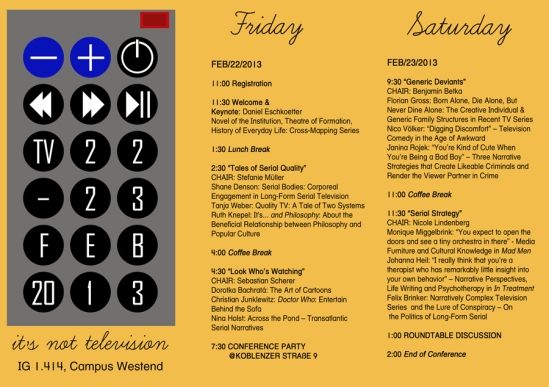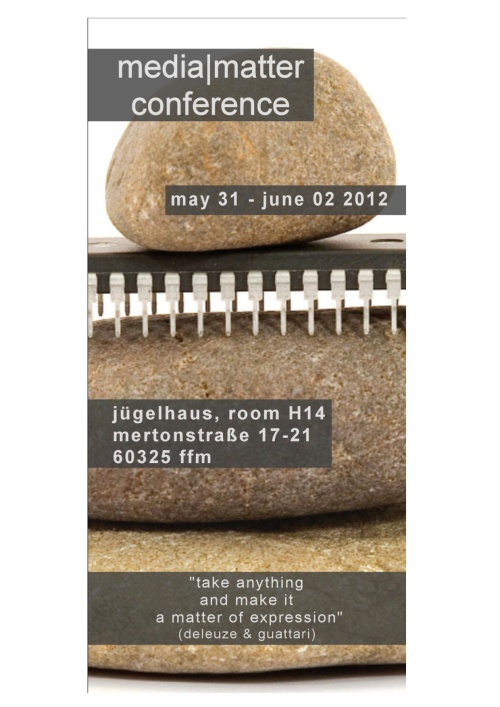[scribd id=133357756 key=key-1070paqvhijzf8pcaxme mode=scroll]
International Conference: “Popular Seriality”
June 6-8, 2013 // University of Göttingen
Above, the preliminary program for the upcoming conference of the seriality research group that several of my colleagues and I are involved with.
Most readers of this blog will already be familiar with the seriality group, but in case you’re not: The Research Unit “Popular Seriality—Aesthetics and Practice,” funded by the German Research Foundation (DFG), brings together 15 researchers from the fields of American Studies, German Philology, Cultural Anthropology/European Ethnology, Empirical Cultural Studies, and Media Studies. Since 201o, six sub-projects have been investigating a narrative format that has become a defining feature of popular aesthetics: the series. The Research Unit addresses questions concerning the wide distribution and broad appeal of series since the 19th century and asks which new narrative formats have emerged through serialization. Further questions are: How do series influence the way we perceive and structure social reality? How are serial characters revised when they undergo one or more media shifts? How can we explain the progressively shrinking boundaries between producers and recipients in long running series? Which transformations in the field of cultural distinctions are produced by complex serial narratives, which are increasingly embedded in highbrow lifestyles and canonization practices?
From June 6 to 8, 2013, towards the end of the first funding period, the Research Unit will hold an International Conference in Göttingen. Talks will be given by members of the Research Unit and well-known researchers in the field of popular seriality. Among the scholars presenting at the conference are Sudeep Dasgupta, Jared Gardner, Julika Griem, Scott Higgins, Judith Keilbach, Lothar Mikos, Sean O’Sullivan, Patricia Okker, Irmela Schneider, Sabine Sielke, Ben Singer, William Uricchio, Constantine Verevis, Tanja Weber und Christian Junklewitz. Jason Mittell will give the keynote lecture.
For more information about the research unit, and to stay up to date on the conference and other activities, please refer to the group’s homepage: http://popularseriality.uni-goettingen.de/






